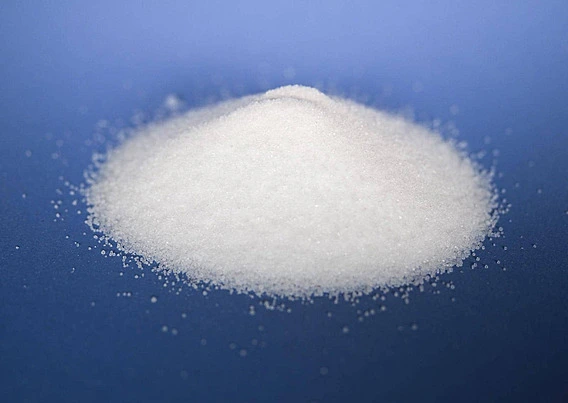IUPAC Name
-
Cas Number
5949-29-1
HS Code
2918.14.00
Formula
C6H8O7.H2O
Appearance
White Crystalline Powder
Common Names
Citric Acid Monohydrate
Packaging
25 Kg Bag
Citric acid, found naturally in citrus fruits, is a mild organic acid with the chemical formula C6H8O7. It plays a crucial role in the citric acid cycle, essential for the metabolism of aerobic organisms. The food and beverage industry heavily relies on citric acid, accounting for over 70% of the annual production exceeding a million tons worldwide. In this sector, it serves as an acidifier or antioxidant, enhancing and preserving the flavors and aromas of products like fruit juice, ice cream, and marmalades. Citric acid exists in two forms: monohydrate, which crystallizes in cold water, and anhydrous, which crystallizes in hot water. The anhydrous form can be obtained by heating citric acid monohydrate.
Citric acid is manufactured through submerged fermentation utilizing fungi sourced from various carbohydrate-rich materials like molasses and starch-based media. During this process, calcium oxide is introduced for precipitation, leading to the formation of the slightly soluble tri-calcium citrate tetrahydrate. The resulting precipitate is separated through filtration and subjected to a washing step to eliminate impurities. Subsequent treatment with sulfuric acid transforms the precipitate into calcium sulfate, which is then filtered out. The citric acid liquid undergoes additional processing, including treatment with activated carbon and passage through both cation and anion exchangers. The final step involves concentrating the liquid in vacuum crystallizers at temperatures ranging from 20 to 25℃, resulting in the production of citric acid monohydrate.
Citric acid plays a prominent role in diverse applications within the food and beverage industry. It is a common ingredient in jellies, jams, sweets, dairy products, frozen fruit, oils, and animal feed. Additionally, it is present in various beverages like wine, ciders, soft drinks, and syrups. Its versatility extends to serving as a preservative, pH adjuster, antioxidant, sequestering agent, acidulant, and flavor enhancer in these products.
Citric acid finds applications in the pharmaceutical industry as well. It serves as an anticoagulant and contributes to effervescence when combined with bicarbonates. Furthermore, it plays roles as an antioxidant and a pH adjuster. Citric acid is employed to enhance the solubility of brown heroin, and it is also utilized in the production of feed for creating antiviral tissues.
In Hawaiian plant cultivation, citric acid is employed as a deterrent to repel frogs. Given its acidic and corrosive nature, it is crucial to carefully determine the dosage when applying it to plants. An excessive amount of citric acid can lead to acidic soil conditions, potentially causing harm to a plant's root system and leading to its demise.
Citric acid is employed to effectively clean iron and copper oxides by eliminating these metal oxides. Its use extends to serving as a buffering and neutralizing agent in various industrial applications. Furthermore, citric acid is valued for its role in adhering to safety regulations, offering non-toxic and non-corrosive attributes, and supporting biodegradable processes. Its versatile applications encompass a wide range of uses such as ceramic production, ion complexing, leather tanning, copper plating, waste treatment, floor cement, adhesives, textiles, and bottle washing compounds, among others.
